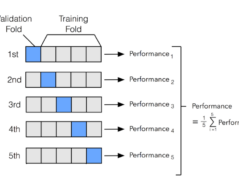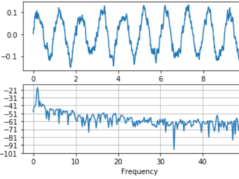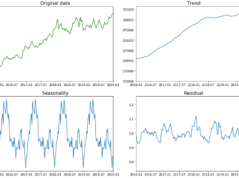
K-Means Clustering: Tool for Financial Market Analysis
Introduction to K-Mean Clustering
Unlock the mystery behind the patterns in financial market data. The key lies not in complex calculations or intricate models, but in a machine learning algorithm known as K-Means Clustering. This algorithm transforms vast datasets into actionable insights and empowers financial analysts to make informed decisions.
What is K-Means Clustering?
K-Means Clustering, a partitioning method, emerges from the realm of unsupervised machine learning. It serves as an essential tool to divide datasets into 'k' different clusters based on feature similarity. Each cluster shares characteristics that differentiate it from others. In the context of financial markets, K-Means Clustering acts as a robust tool to identify hidden patterns and trends that can drive strategic decision-making.
Practical Applications of K-Means Clustering
Portfolio diversification stands as a prime example of the practical application of K-Means Clustering in financial markets.
- Identify diverse investment avenues: K-Means Clustering allows financial analysts to cluster companies based on various factors. These factors might include the sector in which a company operates, its size, or financial performance. By segregating companies into distinct clusters, analysts can identify diverse investment opportunities.
- Design a balanced portfolio: Different clusters extracted from K-Means Clustering represent various risk-return profiles. Such a classification provides investors with a clear view of potential investments aligned with their risk tolerance and return objectives. Thus, K-Means Clustering enables the creation of a balanced portfolio.
Limitations of K-Means Clustering
However, K-Means Clustering does come with its set of limitations.
- Pre-determined number of clusters: A significant limitation of K-Means Clustering is the need for a predefined 'k', which is often unknown in practical scenarios. Determining the optimal number of clusters can be challenging, as it requires domain knowledge and data interpretation skills.
- Sensitivity to initial centroids: The output of K-Means Clustering may vary based on the initial selection of centroids. This sensitivity can lead to different results for the same dataset, potentially affecting the reliability of the analysis.
- Influence of outliers: Another limitation is the sensitivity of K-Means Clustering to outliers. Outliers can lead to potential misclassification, as the algorithm will try to adjust the centroids to accommodate these extreme values.
An Example of K-Means Clustering
To illustrate the power of K-Means Clustering in financial market analysis, consider a simplified example. Assume a dataset of 10 stocks, each represented by two features: return on equity and net profit margin. Apply K-Means Clustering with 'k' equal to 3. The algorithm will segregate these 10 stocks into three distinct clusters. Each cluster represents a different combination of return on equity and net profit margin. With this information, investors can diversify their portfolios, allocating their resources to stocks across different clusters to balance risk and return.
Python code for K-Means Clustering
Import Libraires
import pandas as p import numpy as np from sklearn.cluster import KMeans from sklearn.preprocessing import StandardScaler
Next, we calculate the log returns of the stocks, as we are interested in the changes in the stock prices. We also standardize the returns as K-Means Clustering is sensitive to the scale of the data.
# Assume that 'df' is a DataFrame with daily stock price returns = np.log(df/df.shift(1)).dropna() scaler = StandardScaler() returns_scaled = scaler.fit_transform(returns)
We can then apply K-Means Clustering to the returns.
# Assume 'k' is the number of cluster kmeans = KMeans(n_clusters=k, random_state=42).fit(returns_scaled)
To calculate the expected returns for the Sharpe Ratio, we can use the mean return of each cluster.
df['Cluster'] = kmeans.labels
expected_returns = df.groupby('Cluster').mean()
The expected returns can then be used to calculate the Sharpe Ratio for each cluster. The Sharpe Ratio is the average return earned in excess of the risk-free rate per unit of volatility or total risk. Here, I assume that the risk-free rate is 0 for simplicity.
# Assume 'volatility' is a DataFrame with the volatility of each stoc sharpe_ratio = expected_returns / volatility
We can assign the weights inversely proportional to the volatility to avoid the downward risk.
inverse_volatility = 1 / volatility weights = inverse_volatility / np.sum(inverse_volatility)
This will give you the weights for each stock to minimize risk. Note that this is a simplified example and may not fully capture the complexities of financial markets. You may need to adjust the code to suit your specific requirements.
Conclusion
Financial markets display complexity, often deterring even the most seasoned investors. However, these markets become less daunting and more navigable with machine learning tools like K-Means Clustering. K-Means Clustering does not only decode the patterns in the data, it also provides a roadmap for strategic decision-making. Its limitations notwithstanding, K-Means Clustering remains a valuable tool for financial analysts around the globe. Remember, in finance, knowledge equates to power, and power translates into profit.
Dive into the world of machine learning. Explore the potential of K-Means Clustering. Understand the patterns, seize the opportunities, and navigate the financial markets with confidence and precision.
Follow Quantace Research
-------------
Why Should I Do Alpha Investing with Quantace Tiny Titans?
1) Since Apr 2021, Our premier basket product has delivered +44.7% Absolute Returns vs the Smallcap Benchmark Index return of +7.7%. So, we added a 37% Alpha.
2) Our Sharpe Ratio is at 1.4.
3) Our Annualised Risk is 20.1% vs Benchmark's 20.4%. So, a Better ROI at less risk.
4) It has generated Alpha in the challenging market phase.
5) It has a good consistency and costs 6000 INR for 6 Months.
-------------
Disclaimer: Investments in securities market are subject to market risks. Read all the related documents carefully before investing. Registration granted by SEBI and certification from NISM in no way guarantee performance of the intermediary or provide any assurance of returns to investors.
-------------
#future #machinelearning #research #investments #markets #investing #like #investment #assurance #management #finance #trading #riskmanagement #success #development #strategy #illustration #assurance #strategy #mathematics #algorithms #machinelearning #ai #algotrading #data #financialmarkets #quantitativeanalysis #money






